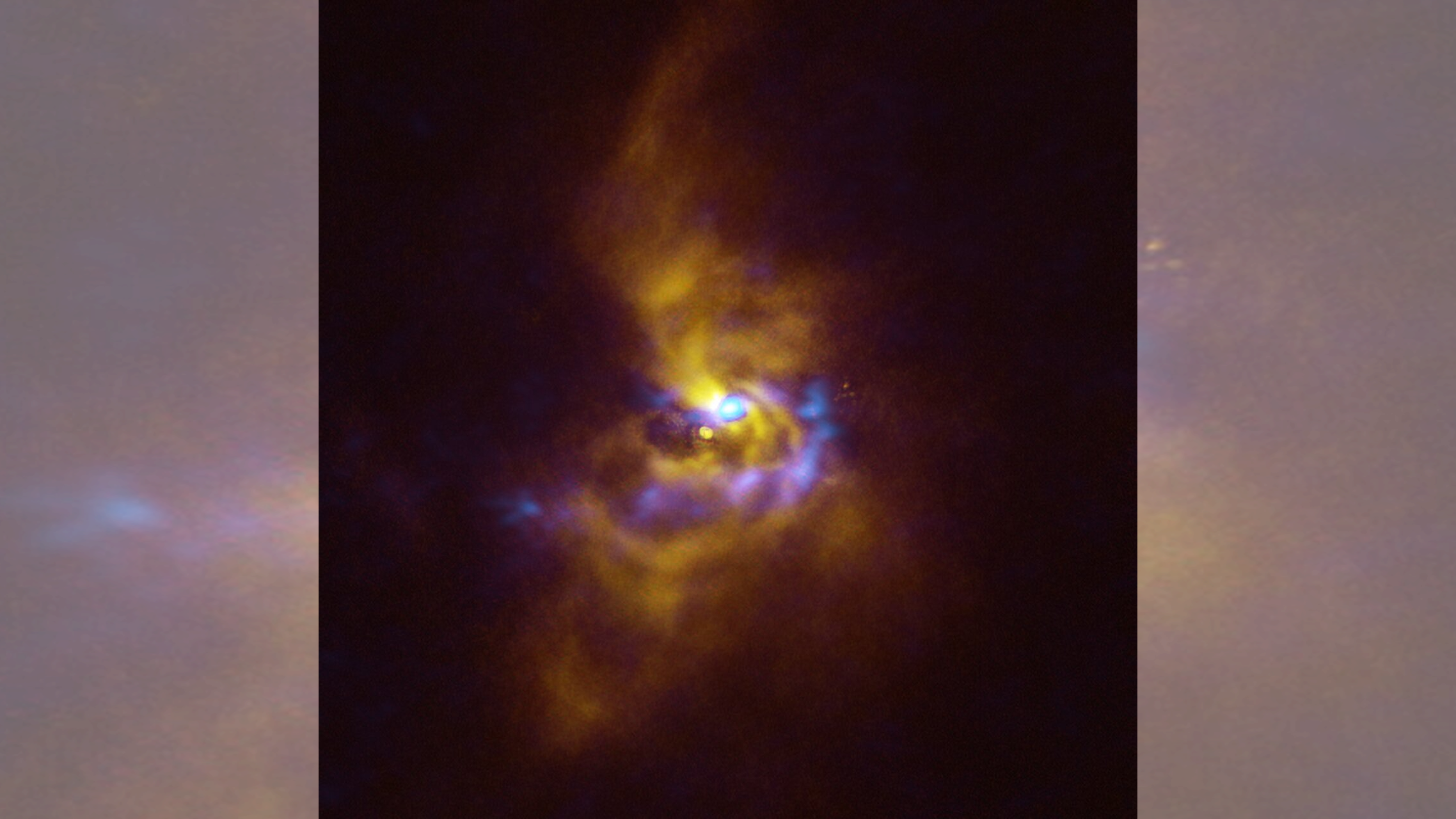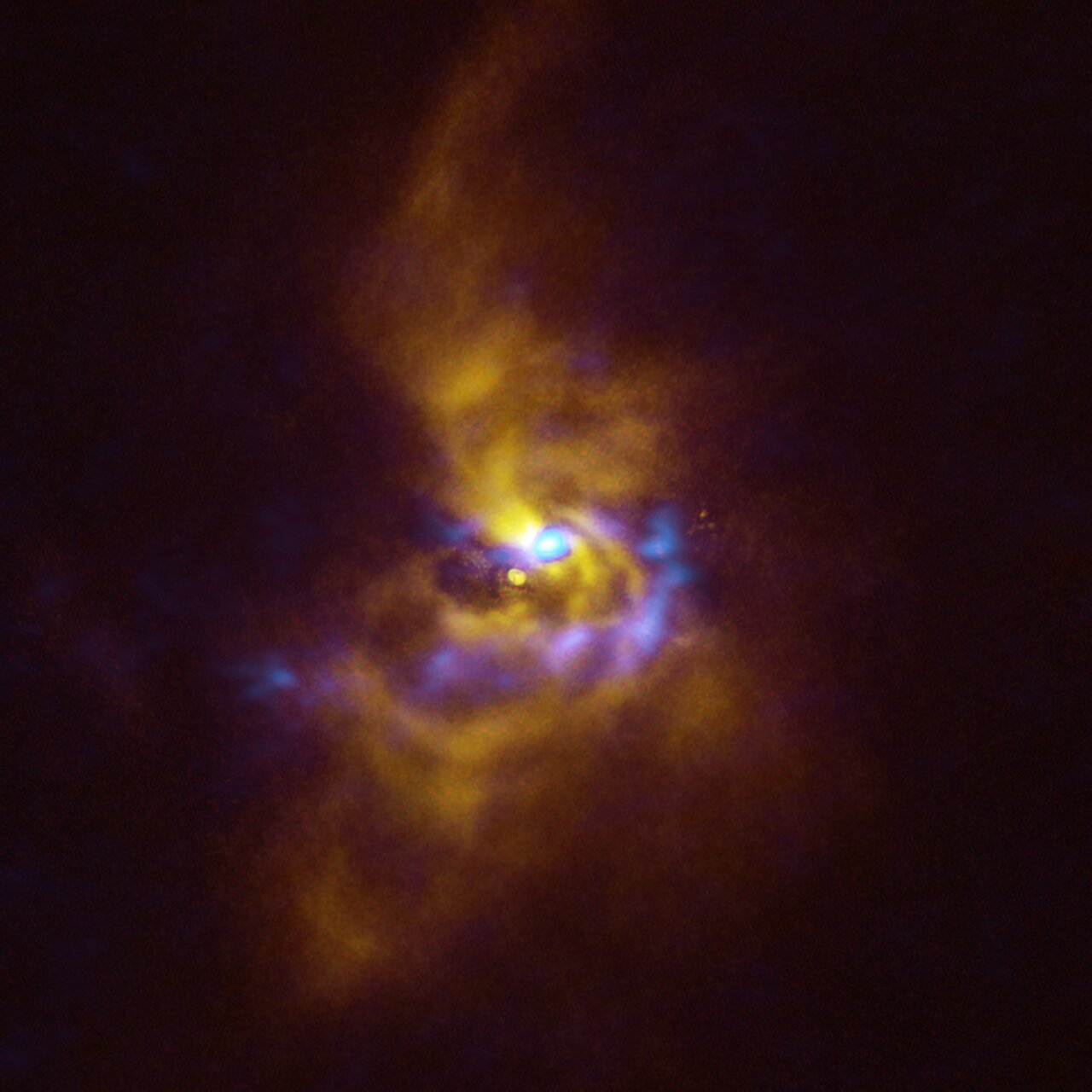
A strangely-flickering star has led two of the world's most powerful telescopes to a rare and wonderful sight: A young star system, pregnant with enormous clumps of gas, on the verge of birthing a giant, Jupiter-size planet.
Scientists discovered the stellar baby bumps around a star called V960 Mon, located roughly 5,000 light-years from Earth in the constellation Monoceros (Greek for "the unicorn"). This star first caught astronomers' attention in 2014, when it suddenly brightened to more than 20 times its original luminosity and then faded over several months. Several studies suggested the presence of an invisible companion star playing gravitational tricks on V960 Mon, forcing globs of gas and dust onto the star and causing it to brighten and grow.
Now, new observations from Chile of the star system taken with the European Southern Observatory's Very Large Telescope and the Atacama Large Millimeter/submillimeter Array (ALMA) show that V960 Mon has not only a meddling companion star in its orbit but also a twisted system of galaxy-like spiral arms lashing out into space — which appear to be funnelling gas and dust into enormous, planet-size clumps.

"This discovery is truly captivating as it marks the very first detection of clumps around a young star that have the potential to give rise to giant planets," Alice Zurlo, an associate professor at Diego Portales University in Chile and co-author of a new study on the star, said in a statement.
Related: Ultrabright stellar object is shining beyond the 'death line,' and no one can explain it
The team's observations revealed that there are at least four spiral arms writhing out of V960 Mon, some of which stretch longer than the entire width of our solar system. When the team looked closer at these arms with the ALMA telescope, they saw signs that the spirals were slowly shattering, with gas and dust coalescing into huge clumps throughout the structures.
According to the team's research, published Tuesday (July 25) in The Astrophysical Journal Letters, those clumps are very likely on the verge of collapsing into giant planets at least the size of Jupiter, the largest planet in our solar system.
Besides giving us a gorgeous image to contemplate, the discovery of these protoplanets in the thick of V960 Mon's spiral forest lends significant evidence to a theory of planet formation called the gravitational instability model, which suggests that newborn planets can appear when large amounts of matter in a young star's orbit contract and collapse.
"No one had ever seen a real observation of gravitational instability happening at planetary scales — until now," study lead author Philipp Weber, a researcher at the University of Santiago, Chile, said in the statement.







